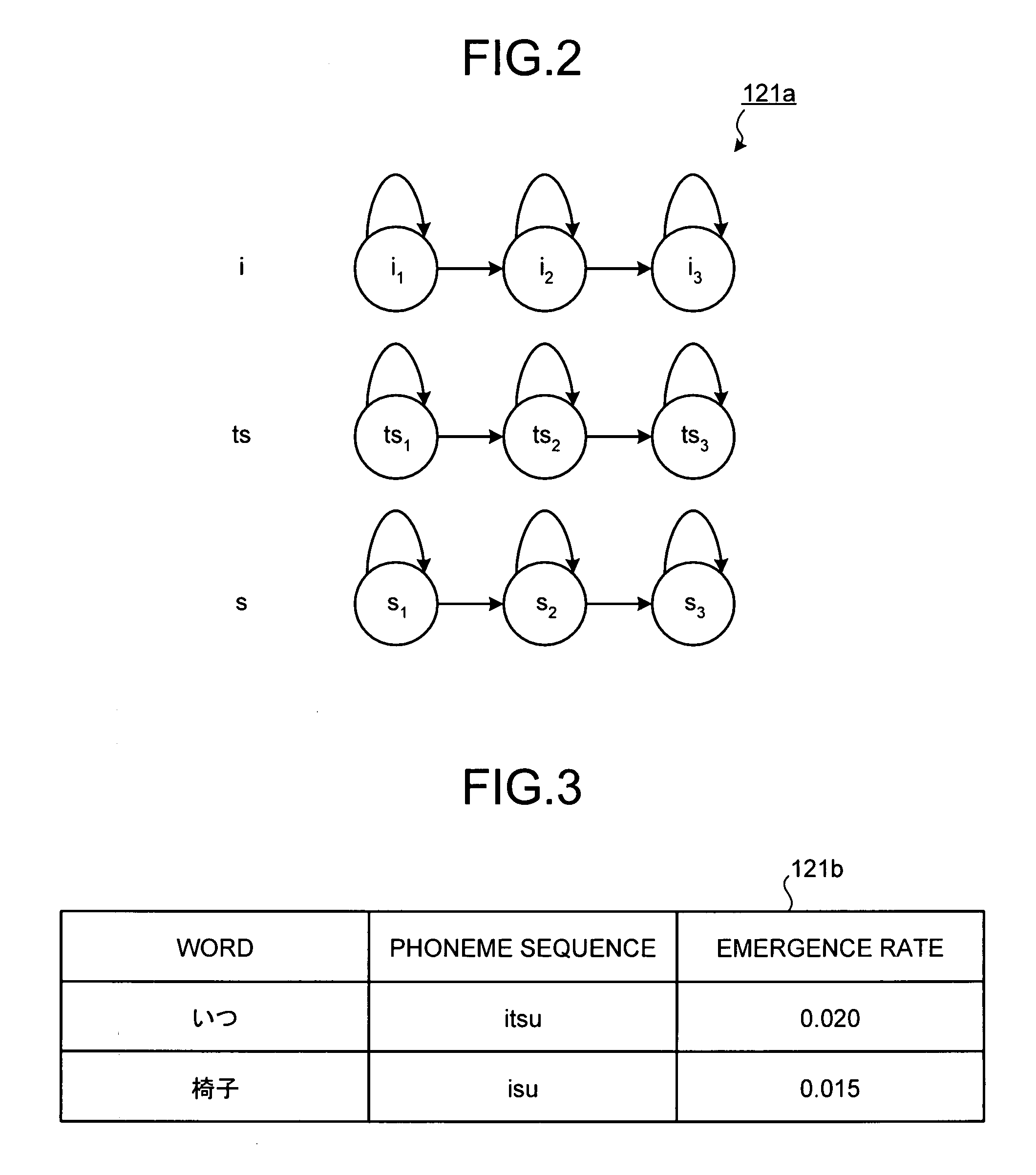Method, apparatus, and computer program product for machine translation
a machine translation and computer program technology, applied in the field of machine translation methods, computer program products for machine translation of first language speech, can solve the problems of increasing processing load, difficult to achieve sufficient recognition accuracy, and affecting recognition results
- Summary
- Abstract
- Description
- Claims
- Application Information
AI Technical Summary
Benefits of technology
Problems solved by technology
Method used
Image
Examples
first embodiment
[0036]A machine translation apparatus according to the present invention can achieve a higher accuracy of a translation result by referring to both recognition results obtained by a generic recognition method capable of recognizing any speech content and an example-based recognition method capable of recognizing speech content corresponding to examples those stored in advance.
[0037]A translation of Japanese into English is explained in the embodiments. However, the present invention is not limited to Japanese and English as a source language and a translating target language, and can be applied to any other languages.
[0038]FIG. 1 is a block diagram of a machine translation apparatus 100 according to the first embodiment. The machine translation apparatus 100 includes a communicating unit 111, a speech input unit 112, a speaker 113, an acoustic-model storing unit 121, a language-model storing unit 122, an example storing unit 123, an input receiving unit 101, a first recognizing unit...
second embodiment
[0119]As described above, the machine translation apparatus 1200 performs the example-based recognition process first. Only if the example-based recognition result does not have enough certainty, the machine translation apparatus 1200 performs the generic recognition process. Therefore, it is possible to prevent unnecessary processes. In other words, it is possible to minimize necessary processes.
[0120]The rule-based translating unit 1208 determines whether the example-based recognition score is below a second threshold that is a lower amount than the first threshold (step S1407). If the example-based recognition score is below the second threshold (YES at step S1407), the rule-based translating unit 1208 performs a rule-based translation process by referring to the generic recognition result (step S1408).
[0121]If the example-based recognition score is not sufficiently high, it is determined that content of the input speech does not correspond to any examples stored in the example ...
third embodiment
[0149]FIG. 15 is a block diagram of a machine translation apparatus 1500 according to the present invention. In the machine translation apparatus 1500, a feature calculating process is performed by a specific processing unit in common between the generic recognition process and the example-based recognition process, because the feature calculating process is a common process.
[0150]The machine translation apparatus 1500 includes the communicating unit 111, the speech input unit 112, the speaker 113, the acoustic-model storing unit 121, the language-model storing unit 122, the example storing unit 123, the, input receiving unit 101, a first recognizing unit 1502, a second recognizing unit 1503, the correspondence extracting unit 104, the similarity calculating unit 105, the example-based translating unit 106, the output control unit 107, and a feature calculating unit 1509.
[0151]Differences between the machine translation apparatuses 100 and 1500 according to the first and third embod...
PUM
 Login to View More
Login to View More Abstract
Description
Claims
Application Information
 Login to View More
Login to View More - R&D
- Intellectual Property
- Life Sciences
- Materials
- Tech Scout
- Unparalleled Data Quality
- Higher Quality Content
- 60% Fewer Hallucinations
Browse by: Latest US Patents, China's latest patents, Technical Efficacy Thesaurus, Application Domain, Technology Topic, Popular Technical Reports.
© 2025 PatSnap. All rights reserved.Legal|Privacy policy|Modern Slavery Act Transparency Statement|Sitemap|About US| Contact US: help@patsnap.com



